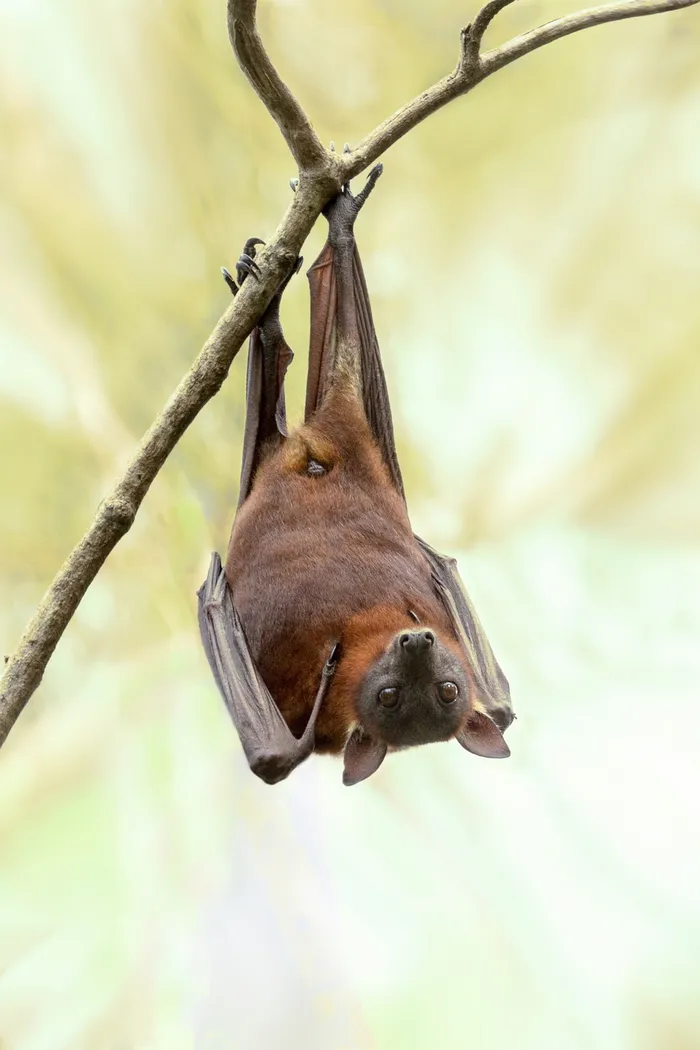7 things you need to know about the deadly Marburg virus

Bat hangs from a tree branch. The US Centers for Disease Control and Prevention says that to mitigate the risk of exposure, people who have close contact with African fruit bats, human patients or non-human primates infected with Marburg virus are at risk and should be isolated. Picture: KwicPicz from Pixabay
With the re-emergence in West Africa of the Marburg virus, an Ebola-like infectious virus, these are the seven things you need to know about it, according to the United States Centers for Disease Control and Prevention (CDC).
If you’ve recently travelled to West Africa or come into contact with someone you suspect could have been exposed to the virus, contact your local health authority immediately.
Transmission
According to the CDC, for the two cases in tourists visiting Uganda in 2008, unprotected contact with infected bat faeces or aerosols are believed to be the most likely routes of infection from the host to human beings. After this initial crossover of virus from host animal to humans, transmission occurs through person-to-person contact.
Diagnosis
Diagnoses for Marburg virus are fairly similar to those of other infectious diseases such as Ebola. According to the CDC, many of the signs and symptoms of Marburg haemorrhagic fever are similar to those of other more frequent infectious diseases, such as malaria or typhoid fever, making diagnosis of the disease difficult. If the patient is suspected to be infected with the virus, the patient should be isolated and public health professionals notified. Samples from the patient can then be collected and tested to confirm infection.
Signs and symptoms
The CDC confirms after an incubation period of 5–10 days, symptom onset is sudden and marked by fever, chills, headache and myalgia.
Nausea, vomiting, chest pain, a sore throat, abdominal pain and diarrhoea may also appear after the fifth day.
Symptoms become increasingly severe and can include jaundice, inflammation of the pancreas, severe weight loss, delirium, shock, liver failure, massive haemorrhaging and multi-organ dysfunction, according to the CDC.
Treatment
According to health authorities, there is no specific treatment for Marburg haemorrhagic fever. The CDC suggests that basic treatment such as balancing the patient’s fluids and electrolytes, maintaining oxygen status and blood pressure, replacing lost blood and clotting factors should be followed.
Risk of exposure
The CDC says that to mitigate the risk of exposure, people who have close contact with African fruit bats, human patients or non-human primates infected with Marburg virus are at risk and should be isolated.
Prevention
Due to the little to no information regarding virus prevention, with transmission from animals to humans still under research, the CDC suggests that avoiding fruit bats and sick non-human primates in Central and West Africa is one way to protect against infection.
Outbreaks
According to the World Health Organization (WHO), two large outbreaks that occurred simultaneously in Marburg and Frankfurt in Germany, and in Belgrade, Serbia, in 1967, led to the initial recognition of the disease.
Furthermore, outbreaks and sporadic cases have been reported in Angola, the Democratic Republic of the Congo, Kenya, South Africa (in a person with recent travel history to Zimbabwe) and Uganda.
Health journals further reveal that in 2008, two independent cases were reported in travellers who had visited a cave inhabited by Rousettus bat colonies in Uganda.
African News Agency (ANA)